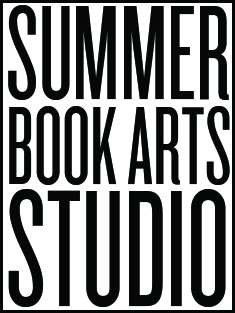Houston Arts View
While not on a par with Paris or New York, Houston is home to many more museums than the large institutions that one always hears about, such as the Houston Museum of Natural Science and the Museum of Fine Arts, Houston, to name just the two most prominent. Many of these smaller museums take a single subject and attempt to explore the history of that subject in some depth. Some, like the American Cowboy Museum and the Center for African American Military History (Buffalo Soldiers Museum), plumb aspects of American history through specific cultural groups, and trace how the cultural roles of those groups have changed as history has moved inexorably onward. Such projects inevitably entail a degree of nostalgia, a looking back with interest in, if not exactly longing for, the way life was. Others look back to honor the past but, in looking back, are more interested in tracing the technological achievements in their fields of interest, following the developments that have led to the present state of the art at the same time that they acknowledge the artisanal attraction that, for some, may cling to the earlier methods
The Museum of Printing History is one such place. Located at 1324 West Clay, between Waugh Drive and Montrose Boulevard, the Museum nor only maintains a permanent exhibit covering the history of printing, but also conducts workshops that are open to the general public and of modest cost, in such areas as papermaking, bookbinding, and paper repair. The Museum emphasizes the importance of developments in printing to the dissemination of information and knowledge and, perhaps more importantly, ideas, and so printing's place in western history as a democratic art.
To that point, the Museum begins its history with facsimiles of some of the great illuminated manuscripts of the Medieval period, like the Irish Book of Kells (the Gospels of the New Testament) and the French The Very Rich Hours of the Duc du Berry (a daily prayer book); as the title of the latter example indicates, these kinds of books were not available to the general populace. But we are also treated to ancient Mesopotamian cylinder seals, and Egyptian hieroglyphics on papyrus, a hands-on display to allow one to feel this earliest medium for communication. Some examples of Japanese and Korean block sets for personal use round out the overview of printing's prehistory.
The permanent collection hits its stride with the replica of Gutenberg's 1450 press, the first in Europe with movable metal type. Gutenberg's press marks the beginning of the radical transformation of Europe from an oral to a written culture, from a culture where knowledge is handed down to a culture of knowledgeable debate. By the time Columbus sails to the New World, most every town in Europe has a printers shop. When, in 1517, Martin Luther nailed his Ninety-Five Theses to the church door in Wittenberg, the local printer took it upon himself to print Luther's dissent from the Roman Catholic authorities and distributed it to friends throughout Europe; within six months, Luther's calls for reform were being debated everywhere.
There follow pages from various important Bibles before getting to the room that, arguably, contains the heart of the Museum's mission to "illustrate the inseparable relationship between the printer, a responsible free press, literacy, knowledge and freedom throughout this world.
At the center of the room are displayed two late eighteenth-early nineteenth century presses; along the walls are the front pages of gazettes and newspapers in which, buried somewhere in the densely printed texts, are news items of important moments in American history, from the Stamp Act Riots of 1765 (among other items, the Stamp Act taxed newspapers), through a report, from a London newspaper, dared March, 1777, of Washington's daring crossing of the Delaware River on Christmas of 1776 to attack Hessian mercenaries at Trenton, New jersey, to Lincoln's Emancipation proclamation of i86z and the Gettysburg Address a year later. Early documents relating to Texas independence, a late nineteenth century linotype press and historic front pages depicting pivotal events of the twentieth century round out the Museum's permanent collection.
The Museum's printing interests are not limited to language; perhaps in recognition of the old adage that a picture is worth ten thousand words, they also treat the history and techniques of the mechanical reproduction of images. A recent exhibition, Images of Texas, looked at early depictions of Texas cities, such as Brownsville, San Antonio, and Houston (with hills!), disseminated through newspapers and journals, that caught the imaginations of a young nation and an older Europe. And, running through October, From the Heart of Texas: Prints by Charles Criner will offer stone lithographs and giclee (ink jet) prints of East Texas and Gulf Coast subjects by the Museum's Artist in Residence.






